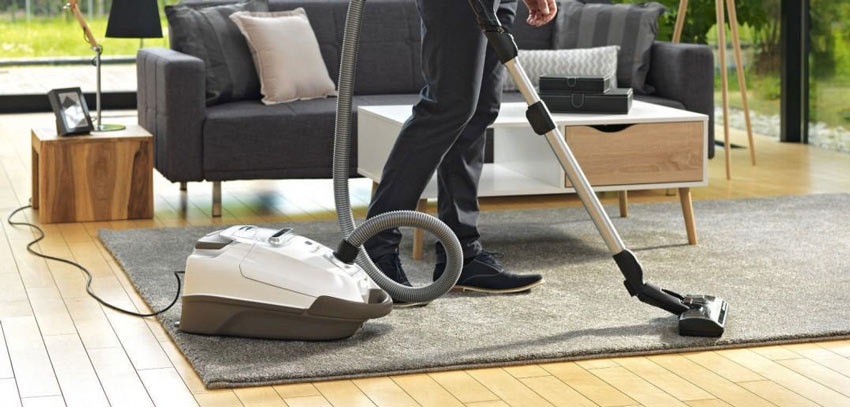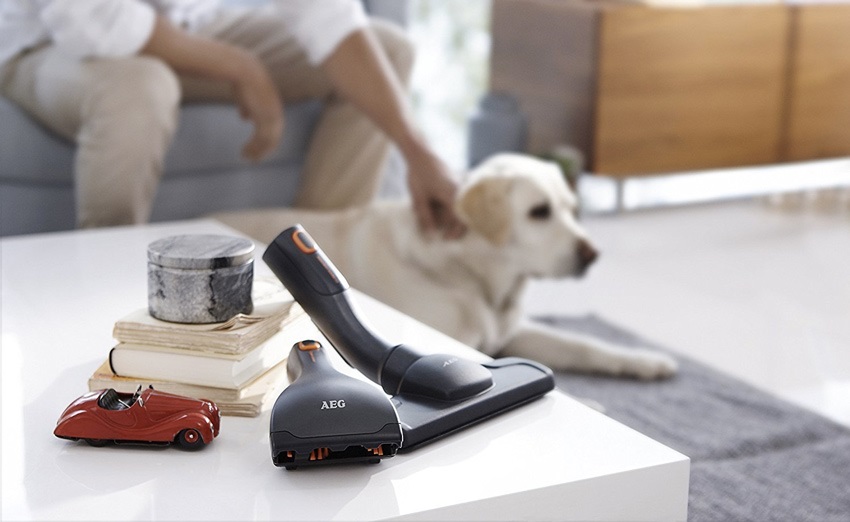Power Input vs Suction Power of the Vacuum Cleaner. What's the Difference?
Although at first glance it may seem that the power input and the power of a vacuum cleaner are one and the same, this is not the case. The power input of a vacuum cleaner has long had nothing to do with its performance. So how to identify a vacuum cleaner with a high suction power, how to find out the suction power of the vacuum cleaner itself and what does the electricity input level actually mean? Let's take a look at what these terms even mean and which parameters are most important to look at when looking to buy a vacuum. As a little bonus, we will also advise you on what to be careful about when choosing a vacuum cleaner.

What Will Be Covered in this Article?
- Power Input vs. Performance of the Vacuum Cleaner
- Power Input Does not Determine the Vacuum Cleaner's Performance
- The Suction Power of Vacuum Cleaners Depends on Several Factors
- How to Maintain the Suction Power of the Vacuum Cleaner?
- How to Find Which Vacuum Cleaner Has High Suction Power?
Power Input vs. Performance of the Vacuum Cleaner
Let's summarise the important facts at the outset:
- The suction power of the vacuum cleaner is the most important parameter when choosing a vacuum cleaner
- The power input of the vacuum cleaner does not determine its performance
- A vacuum cleaner with lower power consumption uses less energy, saves your wallet and is usually less noisy
- The suction power is mostly influenced by the design of the vacuum cleaner, the processing of the nozzle and the vacuumed area
Why is suction power more important than the power input of the vacuum?
Power Input Does not Determine the Vacuum Cleaner's Performance
The power input of the most widely used cleaning aid does not determine the quality and performance of the vacuum cleaner, as many people think. The power input value only determines how much power the vacuum cleaner will use.
And because many people don't know the difference between power input and performance of the vacuum cleaner, there has been a huge increase in energy consumption in recent years. People used to buy vacuum cleaners with high power input, thinking that they would clean their homes perfectly. But in most cases, they bought only a device with high power input, but with low power, a vacuum cleaner that sooner sucked their wallet and the environment than the dirt for which it was bought.
Restrictions on the Production of Vacuum Cleaners with High Power Input
To prevent carbon dioxide emissions from rising several times in the future because of vacuum cleaners high power intake, the European Union has taken a decisive step. It has been decided that vacuum cleaners with an input power above 1600 W cannot be manufactured from September 2014 and vacuum cleaners with an input power above 900 W from September 2017. Thanks to this reduction, Europe will save more than 20 TWh of energy per year in the coming years, which is equivalent to the annual consumption of all Belgian households.
Due to the limitation of vacuum cleaners with an input power higher than 900W, you should not find 2200W, 2000W, 1800W, 1600W, 1400W or 1200W vacuum cleaners with a nozzle for normal household cleaning at this time. They disappeared from the shelves after the stock was sold out.
Production Restrictions Do Not Apply to All Types of Vacuum Cleaners
However, the restriction on the production of vacuum cleaners with an input power above 900 W does not apply to all types of vacuum cleaners. You can still find professional, robotic, stick, outdoor vacuums and wet-dry vacuums with high power input on sale at retailers.

The Suction Power of Vacuum Cleaners Depends on Several Factors
The main indicator of how well your vacuum cleaner will vacuum is its suction power. Remember that it is not directly proportional to the power input. It depends on the design of the vacuum cleaner, the design of the nozzle and even the flatness of the vacuumed area.
It's the Design of the Vacuum Cleaner that Determines the Suction Power
Quality vacuum cleaner manufacturers have invested a lot of money in new technologies in recent years. They changed the vacuum cleaner designs, modified the motor, turbines, piping and hose. Thanks to this, it was possible to reduce the power consumption of the vacuum cleaner several times while maintaining or even increasing its suction power.
The Suction Power of the Vacuum Cleaner also Depends on the Nozzle and Brushes
The suction nozzles and rotary brushes have also been transformed. Thanks to modifications in their design, less energy is now needed to achieve better vacuuming efficiency. That's why you'll also find powerful vacuum cleaners for dog and other pet hair or for the car, which have low power consumption and a special rotary brush for removing hair from beds, upholstery and carpets.

How to Maintain the Suction Power of the Vacuum Cleaner?
Do you find that your vacuum cleaner no longer sucks like it used to? Check:
- For a bagged vacuum cleaner, check whether the bag is full — Once the bag of a bagged vacuum cleaner is filled, the performance of the vacuum cleaner may be reduced. Simply replace the bag with a new one, which should restore the suction power of the vacuum cleaner. When vacuuming fine dust, e.g. of plasterboard, the pores of the bag usually seal, which usually drastically reduces the suction power of your vacuum cleaner. The bag may not even be full and the performance of the vacuum cleaner will be reduced. Again, changing the bag should solve everything.
- With a bagless vacuum cleaner, check the container and filter — if the collection container is overfilled or the filter is not cleaned regularly, the suction power of the vacuum cleaner can drop dramatically. It is ideal to empty the container and clean the filter after each vacuuming. Then the vacuum cleaner will serve you 100% every time

How to Find Which Vacuum Cleaner Has High Suction Power?
Most e-shops categorise vacuum cleaners according to power consumption. This depends on how much energy the vacuum cleaner consumes. However, this value is not crucial for us because it does not determine the performance of the vacuum cleaner. Even vacuum cleaners with low power consumption can boast high suction power, both on hard surfaces and on carpets.
Study the Vacuum Cleaner's Energy Label Carefully
If you want to make sure you've chosen a vacuum cleaner with high suction power, look carefully at all the information on the energy label. On it, you will find the vacuum efficiency class, which will give you all the details about the suction power of the vacuum cleaner and also about the quality of dust collection. Energy labels for vacuum cleaners are usually divided according to the efficiency of vacuuming floors and carpets. The scale is the same as for other appliances, from A (best) to G (worst).
4A Vacuum Cleaners
The higher the efficiency, the better the results. In practice, this means that you vacuum faster and with more dust. Another important category to watch is noise level and filtration level. If a vacuum cleaner is classified as Class A in all four categories (floor vacuuming, carpet vacuuming, noise level and filtration level), it is referred to as an AAAA or 4A vacuum cleaner.
Power input and vacuum cleaner performance are not the only values you should look at when choosing a vacuum cleaner. That's why we have prepared a clear guide for you How to choose the best bagless vacuum cleaner to help you choose the best candidate for another helpful household appliance. And if you already have a clear vision of what to look for, you will surely find what you're looking for in our offer.
The performance of the vacuum cleaner is not determined by the power consumption. In other words, low power input is not a sign of poor suction power. Low power consumption means that the vacuum cleaner uses less energy. When choosing a vacuum cleaner, you need to focus on its suction power and energy class. A vacuum cleaner with a high power input value will usually just vacuum your wallet.